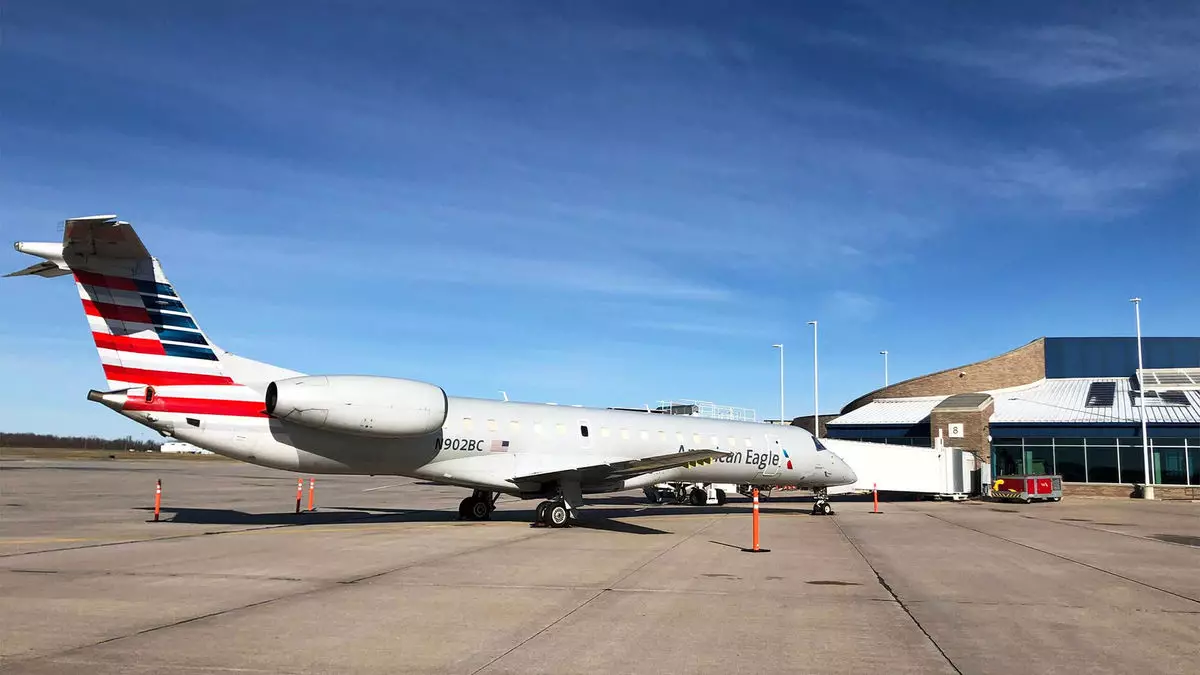In recent years, air travel has undergone substantial changes, especially in smaller cities across the United States. Appleton Airport, located in northeast Wisconsin, is a prime example of this transformation. Following the pandemic, many U.S. cities observed significant declines in air service, with major airlines such as American, Delta, and United grounding numerous regional aircraft due to an acute shortage of pilots. However, Appleton has made notable strides in revitalizing its air travel services, boasting an inspiring comeback story that highlights resilience and strategic adaptation in the aviation industry.
The summer of 2023 marked a significant milestone for Appleton Airport with the launch of American Airlines’ inaugural service to the bustling hub of Dallas-Fort Worth. This operation utilized a regional jet branded as American Eagle and has effectively reinstituted a much-needed connection to one of the largest airport networks in the country. This new route represents just one of the two services that American has either launched or resumed within the past year. The addition of this route complements a previously established service to Charlotte, reinforcing the airport’s connectivity and appeal.
Moreover, both United Airlines and Delta Air Lines have responded to the increasing demand by augmenting their regional flight frequencies at Appleton Airport. As a result, despite witnessing a notable reduction in major airline flights by 31% between October 2021 and October 2023, the airport’s flight count from these main airlines has rebounded astonishingly to 92% of its pre-pandemic numbers in October 2021. This impressive recovery is not only reflected in flight numbers but also in the seating capacity, which has surpassed pre-pandemic levels by nearly 6%, based on data from Cirium.
The enhanced air service at Appleton Airport carries substantial implications for the local economy, particularly for the approximately 250,000 residents of the Appleton metropolitan area. Jesse Funk, the air service and business development manager at the airport, emphasized the ease of travel that this increased connectivity affords to both business and leisure travelers. The improved air access reduces travel times and fosters a more competitive environment that could lead to more favorable pricing for consumers, further stimulating local economic activity.
As Appleton’s airport has witnessed growth, it’s essential to acknowledge that this trend is not just isolated to Appleton. Numerous small to medium-sized communities across the nation are experiencing similar revitalizations in their air services. The recovery of regional operations is now underway as airlines that operate flights under brands like Delta Connection, United Express, and American Eagle ramp up pilot hiring. According to recent reports, American sees an increase in regional aircraft flights by 14.9% compared to the previous year, while United and Delta follow with increases of 13.9% and 9.8%, respectively. This resurgence signals a broader recovery trend that hints at a potential return to pre-pandemic operational capacity.
Despite the encouraging signs of growth, experts caution that the recovery of regional flying will not fully return to the levels seen prior to the pandemic. The airline industry’s long-term strategy appears to favor a shift towards larger mainline jets, which are often more lucrative, thereby reducing the reliance on regional jets. As pointed out by United Airlines’ CEO, Scott Kirby, while regional planes will continue to play a role, they may represent a decreasing share of the overall flying operations.
Additionally, an annual report from the Regional Airline Association presented a sobering analysis of regional service trends, revealing that 65% of U.S. airports still have less overall service compared to three years ago. This points to a stark reality: not all airports will recover; especially in the smallest markets that saw a significant decrease in passenger traffic. The looming pilot shortage issue may resurface as the demand for mainline capacity escalates and deliveries return to normalcy.
While Appleton Airport celebrates its remarkable achievements in reestablishing air service, Funk’s words resonate with cautious optimism: “We’re happy but still looking for more.” The airport is determined to continue enhancing connectivity for its community while remaining vigilant about the challenges posed by the overall aviation landscape. As Appleton forges ahead, it stands as a beacon of hope for the strength and resilience of air travel in smaller markets, highlighting the importance of adaptability and strategic growth post-pandemic. The future of regional air service remains uncertain, but Appleton’s experience showcases the potential for recovery and continued evolution in the face of adversity.

